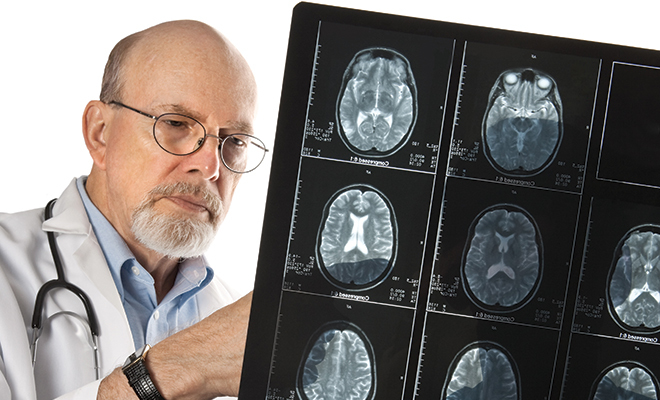
National Stroke Awareness Month: The F.A.S.T. Way to Recognize a Stroke
Every year approximately 800,000 people in the U.S. experience a stroke; that’s about one stroke every 40 seconds. It is the fifth most common cause of death and a leading cause of disability in the country. For every person who dies from stroke, five people who experience one will survive. If you know the warning signs of a stroke and are able to react quickly, you can help your family member or yourself survive a stroke and lead a healthy, normal life.
What is a Stroke, Exactly?
A stroke occurs if the flow of oxygen-rich blood to a portion of the brain is blocked. Without oxygen, brain cells start to die after a few minutes. Sudden bleeding in the brain also can cause a stroke if it damages brain cells.
Almost three-fourths of all strokes occur in people 65 years of age or older. However, a person of any age, even a child, can have a stroke. The two main types of stroke are ischemic and hemorrhagic. About 87 percent of all strokes are ischemic strokes, which are caused by reduced blood flow to the brain when blood vessels are blocked by a clot or become too narrow for blood to flow through. Brain cells in the area die from lack of oxygen. In hemorrhagic strokes, the weakened blood vessel ruptures and bleeds into the surrounding tissues, compressing them and causing damage.
What Are The Signs of Stroke?
Knowing the signs and symptoms of a stroke is the first step to making sure medical help is received immediately. In each minute a stroke goes untreated and blood flow to the brain is blocked, a person loses about 1.9 million neurons. This could mean that their speech, movement, memory, behavior and more can be affected.
Act F.A.S.T!
FAST is an acronym for an easy way to remember and identify the most common symptoms of a stroke. Recognition of stroke and calling 911 will determine how quickly someone will receive help and treatment. The faster you get a stroke victim to the hospital, the more likely their recovery will be more successful. Check out FAST for signs of a stroke.
F: Face—Ask the person to smile. Does one side of the face droop?
A: Arms—Ask the person to raise both arms. Does one arm
drift downward?
S: Speech—Ask the person to repeat a simple phrase. Is their
speech slurred or strange?
T: Time—If you observe any of these signs, call 9-1-1 immediately.
Other symptoms of stroke include numbness or weakness in the face, arm or leg, trouble understanding others and problems seeing with one or both eyes. If someone is having difficulty walking or staying balanced, or appears dizzy and confused, they may be experiencing a stroke. The first priority is to call for help, but make a note of the time of the first symptom, as this important information can affect treatment decisions as well as recovery afterward.
Prevention
Although some risks are hereditary, everyone can reduce their stroke chances through simple lifestyle changes, many of which are the same strategies that are advised to prevent heart disease. Monitoring and controlling blood pressure, cholesterol and diabetes can decrease the risk of stroke. In addition, maintaining a healthy weight, eating a nutritious diet and exercising regularly all combine for a reduced risk of stroke.
Smoking almost doubles the risk of stroke in smokers compared to nonsmokers, since it thickens blood and builds plaque in the arteries. Drinking too much alcohol can also increase blood pressure and the risk of stroke. By modifying behaviors, knowing hereditary risks and being aware of warning signs, a person can dramatically decrease their chances of experiencing a stroke.
After A Stroke
Stroke affects everyone differently, but most survivors improve over a period of time, which may be months or years. Recovery from stroke involves making changes in the physical, social and emotional aspects of life. Survivors may experience a grieving process similar to those who have experienced death or divorce.
Adapting to life after a stroke can be daunting for both stroke survivors and caregivers. Occupational and physical therapists can help patients manage daily activities and regain independence. In addition, patients may consider having an evaluation of their home before they are discharged from the hospital to help prepare a safer environment.
The success of stroke recovery varies depending on a number of factors, including how much damage the stroke caused, how soon recovery is started and how high the motivation is to work toward recovery. Patients and families should be proactive in seeking guidance from their doctor or nurse about prevention and rehabilitation. Excellent advice and publications can also be obtained from the national stroke education associations.
While it is normal to feel sad, angry or anxious after a stroke, some people will also worry about work, money, relationships and more. By going through a strategic rehabilitation and taking a more active approach to quality of life, patients can get back to normalcy and live as independently as possible.
Sources: strokeassociation.org, nhlbi.nih.gov and stroke.org.







